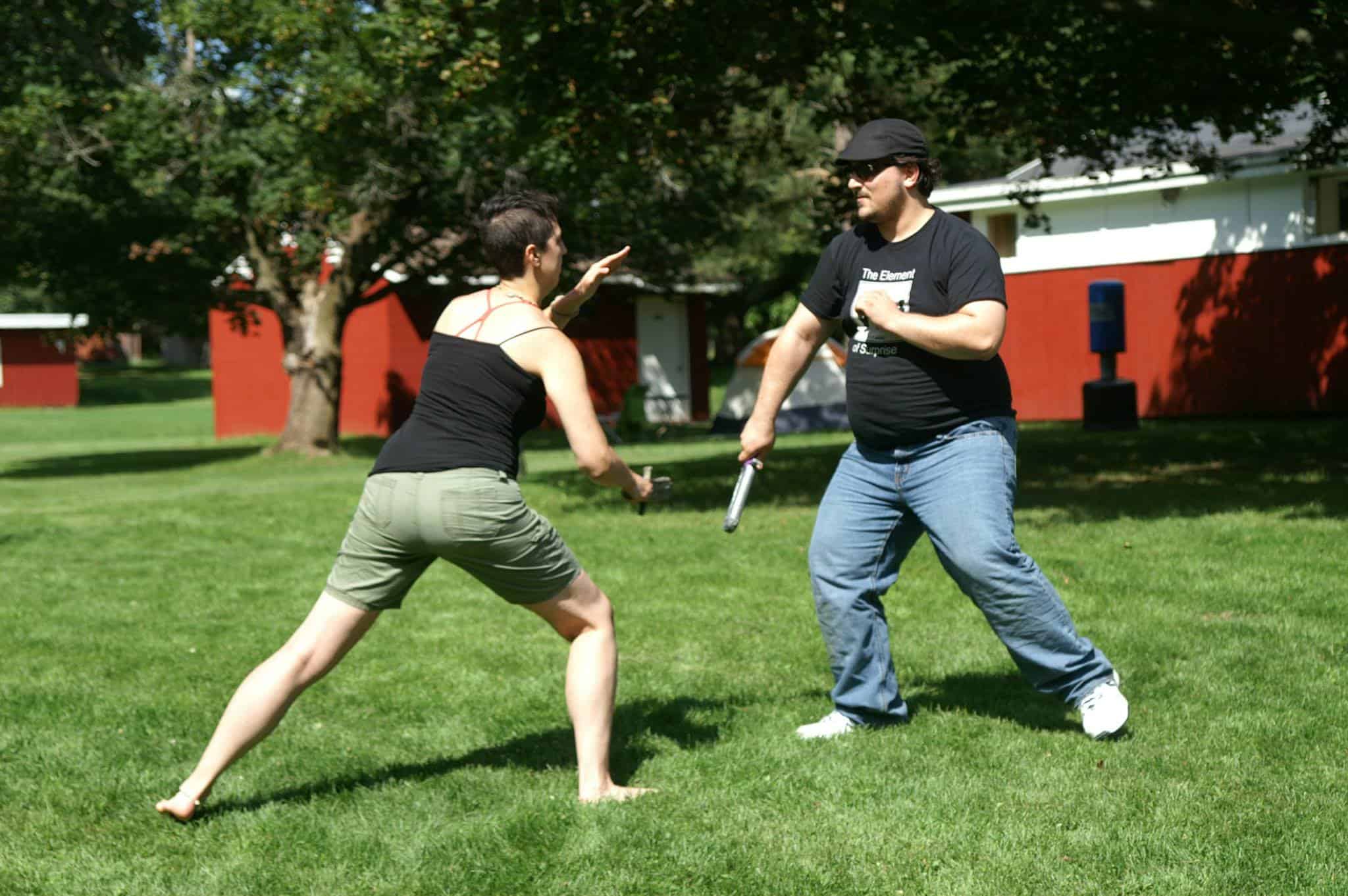At Polaris Fellowship, the first weapon that we teach our new students is the knife. We begin with a few fundamentals of stance, stepping, and posture. After these basics we begin the first weapon focus- knife drills and knife fighting.
Though there are elements to sparring with knives that are complex, studying knife can be a good introductory weapon for beginning students.
Simple Enough to Master The Basics
I am not here to claim that knife fighting is simple; like any style it has complexity and nuance. However, at its introductory level, knife fighting is simple enough to allow a beginner to focus on the basics.
The knife blade is shorter than a sword blade. When using it in drill, it is easier to focus on hitting on edge; the blade is less likely to turn in your hand. The types of motions at an introductory level are simple. Due to these simple motions, a beginning student can focus on getting up to the level where they can safely spar relatively quickly.
Though it must be balanced with safety and good form, students can move quickly to drill with other students and sparring. Sparring helps to get students into the thick of learning faster. When students are able to interact with each other in sparring, they make connections and extrapolate on their knowledge more quickly.
Starting with the knife as the first weapon allows us to lay the foundations fairly quickly and move the students into sparring without much delay which keeps the students engaged throughout the learning process.
Knife Fighting Builds Muscle and Range Of Motion
The knife, as an introductory weapon, allows students to begin to build up the strength and range of motion required for the longer weapons. Many of the cuts follow similar basics to those of longer weapons.
By starting with knife fighting, the students practice the various forms with a short weapon that weighs relatively little compared to full swords. The instructors can watch for and address any form issue that arise. This allows us to correct issues before they can cause greater injury with the larger weapons. Lighter weapons allow students to practice without putting the additional strain of a longer weapon on their muscles and joints.
By starting with the knife, students have time to acclimate to motions and the weight of weapons before moving to longer weapons.
Knife Fighting Introduces Range
We start our students with knife vs knife drills and sparring, but once they are comfortable with it we allow them to spar against swords and other longer weapons.
Knife fighting against a longer weapon has a range disadvantage. The range disparity forces students to integrate footwork and techniques to close. They begin to learn how to change range and pay attention to the effective ranges of the different weapons they face.
We don’t expect our students to master the understanding of range when they first learn fighting, however starting with knife fighting allows them to explore range and build the foundations for the deeper understanding they will develop later.
A Good Beginning
Knife fighting allows us to lay the foundations of the skills that students at Polaris need as they progress through the later weapons. In addition to being a good building block for learning, knife fighting is fun and allows new students to move into sparring relatively quickly.
Interested in learning knife fighting? Contact us!
